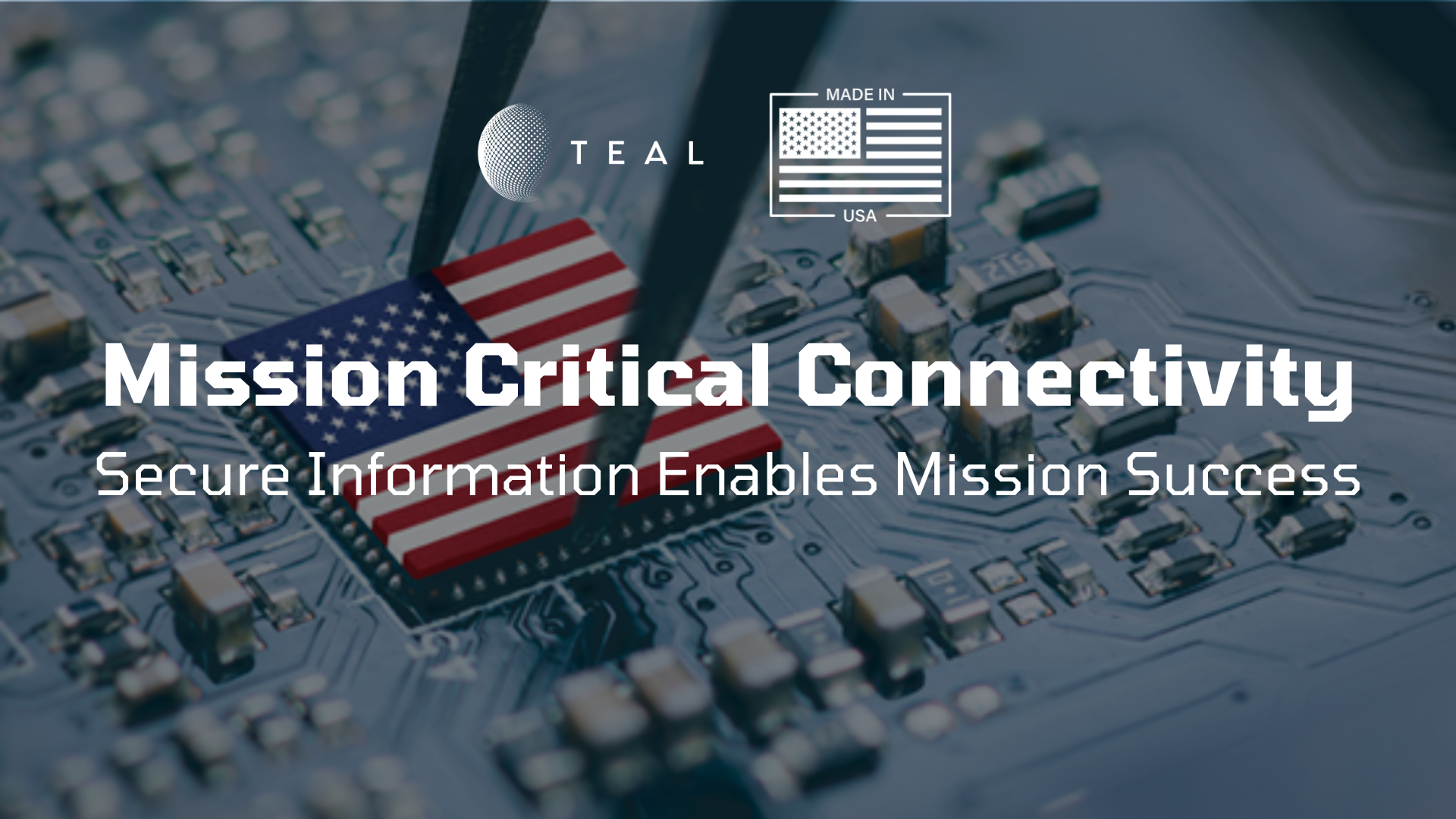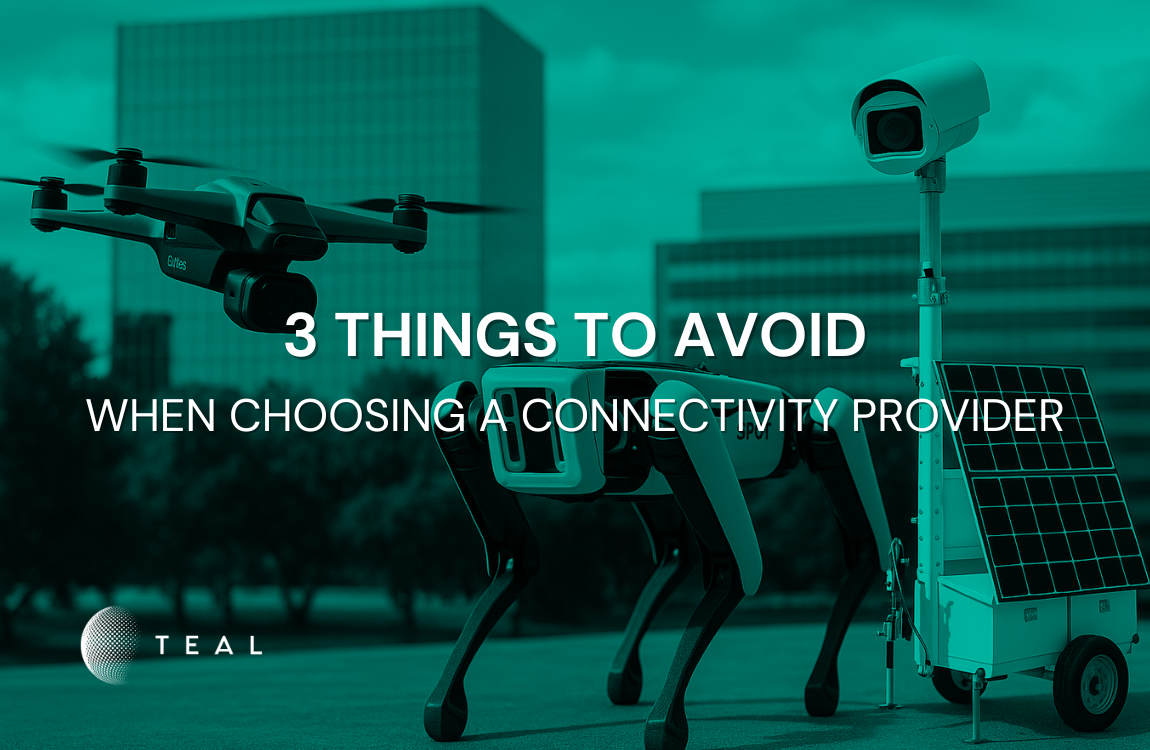Drone as First Responder Programs and the Importance of Reliable Cellular Connectivity

In the modern era, where time is of the essence and quick decision-making can save lives, Drones as First Responder (DFR) programs are revolutionizing emergency response. Police departments across the globe are recognizing the immense potential of deploying drones to respond to 911 calls and other emergencies. These sensor and camera-equipped drones, launched from regular bases like police station rooftops, provide a real-time aerial view of the scene, enabling law enforcement officers with enhanced situational awareness.
The Importance of Innovative DFR Technology
According to the FBI, the number of officers killed in the line of duty is on the rise, year over year. Departments are constantly on the lookout for tools and techniques to reduce the dangers of the job and save officer lives. Enter the drone.
Noreen Charlton, Sr. Manager Public Safety Marketing for Skydio, stated that, “At scale, DFR programs will be one of the most positive and impactful technology-driven changes to the safety of our cities ever.” She explained that organizations with drone initiatives “report 20%-30% of calls being resolved without needing to send an officer when a drone arrives first,” which increases efficiency and keeps personnel safe. Moreover, she said that drone programs enable faster response times, increase transparency of public safety operations, and can cut down on the use of force.
Despite these advantages, fewer than 10% or 1,400 of the approximately 18,000 law enforcement agencies in the US have a drone-based program.
Key Reasons Agencies are Developing Drone as First Responder Programs
- Better Utilization of Public Safety Resources
- Real-time aerial views of situations enable agencies to not send officers to nonexistent emergencies.
1 in 4 calls cleared solely with drones - Immediate on-scene information captures video of potential crimes in progress and identify a safe approach by getting an understanding of the nature of the emergency.
- Drones respond faster to calls statistically under 70 seconds on average or and can reach incident sites, potentially arriving on-scene 137% faster than a patrol unit, and promptly deliver crucial scene information to dispatch and first responders.
As drones become less expensive and more capable, the number of DFR programs is expected to skyrocket.
Market Growth and Regional Developments
The public safety drone market is projected to grow at a rate of 11.7% between 2024 and 2031. This growth is driven by key drone manufacturers, favorable regulations, and significant government investments worldwide. In Europe, for instance, safety laws and technical standards outlined in the European Union’s Drone Strategy 2.0 are paving the way for greater drone deployment in various emergency scenarios.
The Role of Drones in Emergency Response
Rapid Response to Critical Incidents
One of the most significant advantages of DFR programs is the drastically reduced response times. Drones can arrive on the scene in seconds, providing immediate insights into situations such as crimes in progress, fires, traffic accidents, public disturbances, and even active shooter scenarios. This swift response not only ensures that officers are better informed but also increases transparency and improves decision-making outcomes.
Enhancing Community Safety
DFR programs have been shown to enhance community safety by enabling law enforcement to respond more effectively to emergencies. Studies indicate that shorter response times lead to a higher probability of arrests and incident resolution. A successful drone program can deploy a drone to an incident in 70 seconds, significantly increasing the likelihood of positive outcomes.
Boosting Efficiency
Drones also contribute to greater efficiency within law enforcement agencies. Reports suggest that a quarter of calls can be resolved without dispatching an officer when a drone arrives first. This allows agencies to allocate their personnel more effectively, ensuring that officers can focus on the most critical tasks while maintaining safety and productivity.
Reducing Use of Force
Deploying drones as first responders helps alleviate the fear of the unknown, a common issue when officers enter potentially dangerous situations. Drones provide crucial information that can de-escalate tense engagements or confirm the need for additional support, ultimately leading to reduced use of force and better overall outcomes.
The Future of DFR Programs
Autonomous Drones
 The future of DFR programs lies in autonomous drones. These drones can be launched automatically from rooftops upon detecting gunfire or other emergency signals, even before a 911 call is made. Imagine small drones deployed from first responder vehicles, autonomously tracking officers and providing real-time aerial support. Such advancements will further enhance response times and situational awareness, making our cities safer and more secure.
The future of DFR programs lies in autonomous drones. These drones can be launched automatically from rooftops upon detecting gunfire or other emergency signals, even before a 911 call is made. Imagine small drones deployed from first responder vehicles, autonomously tracking officers and providing real-time aerial support. Such advancements will further enhance response times and situational awareness, making our cities safer and more secure.
Autonomous drones remove the need for a human, performing many of the same tasks as person-piloted drones, but automatically. These drones detect obstacles, maneuver inside buildings and can follow officers into dangerous situations, providing aerial support
Autonomous drones will increase response time and save money.
Overcoming Challenges with Drones
Police Staffing Constraints
Law enforcement agencies face significant staffing constraints and escalating workloads. The increased demand for services places immense pressure on existing resources. Drones offer a solution by effectively extending the reach of law enforcement, reducing response times, and alleviating the burden on ground-based units. “Drones are a huge force multiplier for agencies. 90% of the time, they’ll reach a scene before an officer can,” says Chad Karlewicz, who serves as Commander of Special Operations at the Renton Police Department in Washington. “Drones can help us clear a lot of calls and reduce the number of officers needed per call. The future is bright for this technology in law enforcement.”
Time Sensitivity in Emergencies
In emergency situations, every second counts. Traditional response methods may struggle with delays due to traffic congestion or physical barriers. Drones, equipped with advanced navigation systems, can bypass these obstacles and reach incident sites swiftly, ensuring timely resolution of critical incidents.
Real-World Examples
The success of DFR programs is evident in real-world scenarios. Drones are already being used for search and rescue missions, crowd monitoring, and providing thermal images in difficult-to-reach areas. These applications highlight the versatility and effectiveness of drones in enhancing public safety and operational efficiency.
In the ever-evolving landscape of public safety, technological advancements are essential to improving the efficiency and effectiveness of emergency response. A groundbreaking alliance between Skydio and Axon is revolutionizing how public safety agencies operate, bringing powerful situational awareness into every relevant response with Drone as First Responder (DFR) programs. This collaboration combines Axon’s expertise in real-time operations and evidence management with Skydio’s advanced autonomous drone technology for first responders. Together, they offer a comprehensive solution that simplifies the integration and scaling of DFR programs, ensuring better community outcomes and increased safety for first responders.
Another example is BRINC’s Drone as First Responder (DFR) program is designed to enhance public safety operations by deploying drones to emergency scenes immediately upon receiving a call for service. Here are some key aspects of BRINC’s DFR program:
- Immediate Response: DFR drones can reach emergency scenes in under 70 seconds, providing crucial situational awareness to first responders before they arrive1.
- Enhanced Safety: The drones offer real-time aerial views, allowing officers to assess situations and make informed decisions without putting themselves in immediate danger2.
- Versatile Applications: DFR drones are used in various scenarios, including crimes in progress, traffic accidents, fires, public disturbances, and emergency payload delivery (e.g., AEDs for cardiac arrest)2.
- Integrated Solutions: BRINC’s DFR solution includes the Responder drone and Responder Station charging nest, ensuring the drones are always ready for deployment
The Importance of Reliable Cellular Connectivity
For DFR programs to succeed, reliable cellular connectivity is paramount. Beyond Visual Line of Sight (BVLOS) drone operations require real-time, low-latency data transfer for safe and responsive missions. TEAL’s eSIM technology outperforms traditional roaming services, ensuring higher reliability and faster deployment times. This connectivity is crucial for maintaining continuous GNSS positioning and adhering to FAA regulations, which mandate protocols for lost connections to ensure safety.
The FAA’s rules for Beyond Visual Line of Sight (BVLOS) drone operations include specific protocols for when a drone loses connection. If a drone loses its connection, it typically must have a “return to home” (RTH) feature that automatically navigates it back to its base or a pre-determined safe location. This is to ensure safety and minimize risks associated with losing control of the drone.
Additionally, the FAA requires that BVLOS operations maintain reliable GNSS positioning to ensure continuous tracking and control. These measures are part of the broader regulatory framework aimed at ensuring the safety and reliability of BVLOS drone operations and highlight the importance of redundance cellular connectivity.
With TEAL, mission-critical drones benefit from over-the-air access to connect onto any network globally. Benefits of flexible and programmable eSIM technology include:
- Simplified operations with a single eSIM SKU for global network access
- Enhanced throughput with lower latency and higher redundancy
- Faster and more reliable connectivity, allowing one pilot to control multiple drones
The integration of drones as first responders represents a transformative shift in emergency response and law enforcement. By significantly reducing response times, enhancing situational awareness, and increasing operational efficiency, drones are poised to become an indispensable tool for public safety agencies. Reliable cellular connectivity, like that provided by TEAL’s eSIM technology, is crucial for maximizing the potential of these aerial assets.
As drones become more affordable and capable, their adoption is expected to grow, bringing about a safer and more efficient future for law enforcement and emergency response. Join the ranks of forward-thinking agencies and explore the benefits of implementing a DFR program today.
Ready to revolutionize your emergency response capabilities? Find out how TEAL can enhance your DFR program. Schedule a meeting with one of our experts today.
Click here to book a meeting!
Recent Posts
New Podcast! Space and Air Supremacy: The Role of Drones in Modern Warfare
Teal Communications Staff2025-06-25T20:15:23+00:00
Mission Critical Connectivity: Secure Information Ensures Mission Success
Teal Communications Staff2025-06-25T02:21:28+00:00
3 Things to Avoid When Choosing a Connectivity Provider
Teal Communications Staff2025-06-20T20:53:06+00:00




